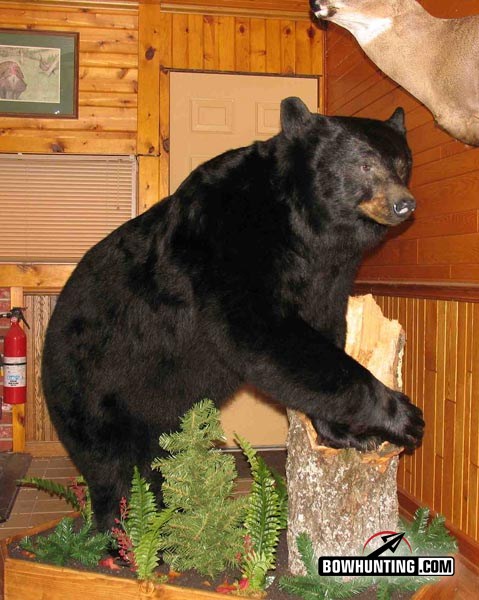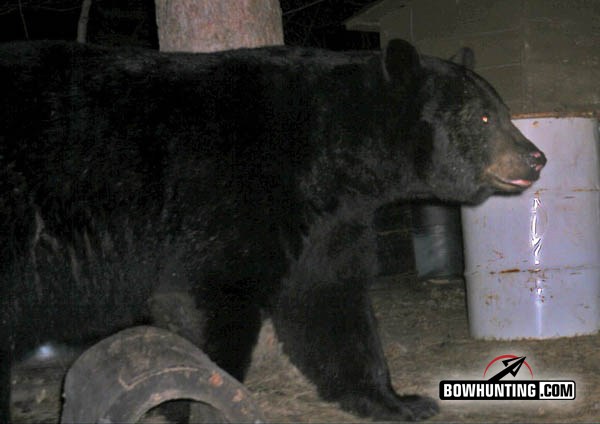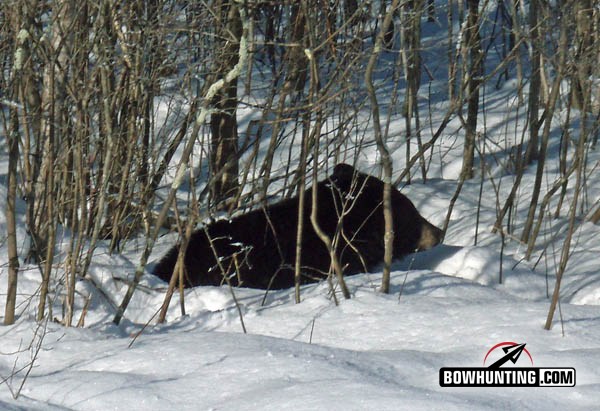LAST UPDATED: May 8th, 2015
Could Wisconsin’s large, active hunting culture might explain why the Badger State hasn’t reported one fatal attack by a black bear the past 110 years, even though it supports one of North America’s healthiest black-bear populations?
Granted, fatal black-bear attacks are rare on this continent, but let’s not pretend they’re always “our own darned fault.” Yes, we shouldn’t leave out food and garbage in bear country. And yes, prudent people wear little bells when hiking and camping.
A Calgary researcher documented 63 people killed by black bears in Canada and the United States from 1900 to 2009.
But with hundreds of thousands of black bears roaming the continent – some big, and all sprouting claws and teeth — it’s inevitable a few will behave badly if they don’t fear people.
In fact, recent research by Professor Stephen Herrero at the University of Calgary documented 59 black-bear attacks that killed 63 people in Canada and the United States between 1900 and 2009. Of those, 54 (86 percent) occurred between 1960 and 2009.
Further, even though Canada and Alaska have only 1.75 times as many black bears as the lower 48 states, they had 3.5 times as many fatal attacks. Specifically, Canada and Alaska had 49.
The lower 48 had 14. Colorado led with three and Michigan had two. However, many states with more than 20,000 black bears had no fatalities, including Wisconsin, with 26,000 to 40,000 bruins; California, 31,000; Idaho, 22,500; Maine, 23,000; Montana, 20,000; and Oregon, 27,500.
Herrero and his coauthors speculate that black bears in Canada and Alaska have less contact with people because the human population is about 10 percent that of the lower 48’s. The increasein bear attacks since 1960 coincides with increases in human and black-bear populations, and increased recreational and commercial activity in bear country.
Forty-nine of the 54 fatal attacks (91 percent) since 1960 involved bears that “acted as a predator.”
Further, most Canadian black bears experience less hunting pressure and live in less productive habitats. Therefore, they endure periodic food stress, which might push some bears to view people as prey.
Herrero concluded 49 of the 54 fatal attacks (91 percent) since 1960 involved bears that “acted as a predator.” That is, they weren’t surprised by accident, they weren’t sows protecting cubs, and they weren’t protecting kills or trying to claim kills made by hunters.
Those reasons often incite fatal attacks by grizzlies and Alaskan brown bears, but rarely explain black-bear attacks, Herrero found. In studying the 36 killings considered predatory, he alsofound 33 (92 percent) involved male bears. Females with young are not the most dangerous black bears.
In predatory attacks, the bear was seen or it left signs indicating it was quietly following, stalking and searching for its victim. It then unleashed a full out attack, typically using its paws, claws, jaws and teeth. It might have also eaten part of its victim; and dragged, guarded and buried the body.
Blacks bears seldom attack after making defensive, threatening behaviors like short charges, ground swatting with one or both front paws, slow and deliberate approaches, clacking teeth, or huffing, snorting, gurgling and growling loudly. People usually dissuade them by yelling or banging something loudly.
Black bears that kill humans are usually males, and they usually weren’t surprised by their victims.
In most cases since 1960 (37 of 54, or 69 percent), the victim was alone. Another 12 cases (22 percent) involved two people. Larger groups likely make more noise and appear more intimidating. Just as importantly, companions often punched, kicked, gouged and struck the attacking bear until it broke off its attack.
And although black bears killed people of all ages and both sexes, Herrero wrote: “Our impression … is that young and older people may be more vulnerable to fatal attack because they may be perceived as less threatening and less able to resist serious attack.”
Although garbage and human food wasn’t associated with most fatalities, Herrero found it was present in 38 percent of them. This suggests food/garbage attracted bears, which become increasingly aggressive when seeking such foods.
This highlights an oversight in our mostly futile attempts at public education. We tell people not to fear wild animals, and we warn that wildlife can turn dangerous when fed.
What we don’t say is that, for their own good, wild animals must fear us. Maybe we trust people to make that connection, and figure out that hunting instills and maintains those fears.
Is it possible that’s asking too much of a society that’s increasingly removed from nature?

 By
By 






